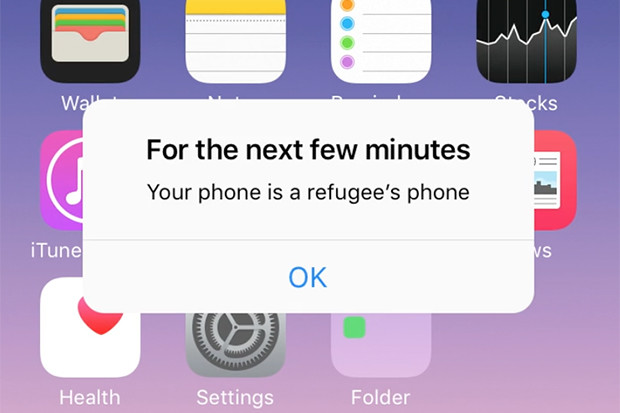BBC Media Action has produced a mobile-first video designed to put viewers in the shoes of refugees travelling to Europe, aiming to help audiences understand the fear of those fleeing their countries during the crisis.
Tom Hannen, who produced the piece for BBC Media Action, told Journalism.co.uk how the video, which is designed to be watched vertically on a mobile phone, gives viewers the impression that it is co-opting their device by sending them text messages and WhatsApp notifications as if they were coming from their own contacts.
“People feel very strong connections to their own phones, and many viewers watching the video for the first time see the first message come through from ‘Dad’ and think it is actually a message to them – which is the point of it,” said Hannen.
“We wanted to make something that was shareable, relevant and interesting, to draw the viewer directly into the crisis.”
The video is based on research conducted by BBC Media Action with the aim of helping humanitarian agencies become aware of the communication issues faced by refugees in transit.
BBC Media Action interviewed 79 refugees and 45 humanitarian workers in order to accurately portray the experiences of refugees for viewers. Their research showed that access to internet, mobile networks and social media offer vital support for people undertaking these journeys.
In the video, viewers are placed alongside refugees on a boat to Greece, before receiving a text from an unknown contact telling them the borders are shut, and that they should turn back – this is all happening while their battery is running out.
Your phone has been taken over, you are no longer in charge of your destinyTom Hannen, BBC Media Action
“We were trying to make the person watching this video feel disconcerted – your phone has been taken over, you are no longer in charge of your destiny.
“The question that kept coming up the whole time was ‘who can you trust?’, which is an important message throughout the video.”
Hannen deliberately avoided using Arabic names throughout the piece, as it is meant for an English speaking audience. He felt that by avoiding the use of any names, simply using 'Dad' and an unnamed WhatsApp contact, they had reduced viewers' ability to distance themselves from the story.
To produce the video, Hannen utilised screen-capture software to record the actions on his phone as he used the various apps featured in the video. With his iPhone’s camera, he took pictures of the boat and the surroundings, portraying them in the video as if they were happening live.
“I wanted to get it as pixel-perfect as possible, as if the viewer was dealing with their actual phone and its operating system, rather than watching a video."

Hannen explained that although making vertical video in this way was a technical challenge, it gave him the opportunity to think more creatively, and produce content which is practically beneficial in the way it is delivered.
“One of the primary audiences for the video were aid workers in the field, and of course if you are busy working in a refugee camp, you are not necessarily going to be sitting down at your desk and opening your laptop,” said Hannen.
“When you see someone holding their mobile phone, they are never holding it landscape – the natural grip of a phone is vertical, and that is why there is so much interesting vertical video these days.
“It is just a convention that we have ended up with letterbox media, but the phone gives you an opportunity to try something different.”
Free daily newsletter
If you like our news and feature articles, you can sign up to receive our free daily (Mon-Fri) email newsletter (mobile friendly).
Related articles
- New MoJo learning platform Mobile Creator Academy set to launch
- Mobile journalists Sabbir Ahmed and Jamil Khan on creating a mobile-first newsroom
- Direct publishing: what you need to know about this new technology
- CNN embarks on three-year digital project to cover gender inequality worldwide
- A new book covers pretty much all things mobile journalism










